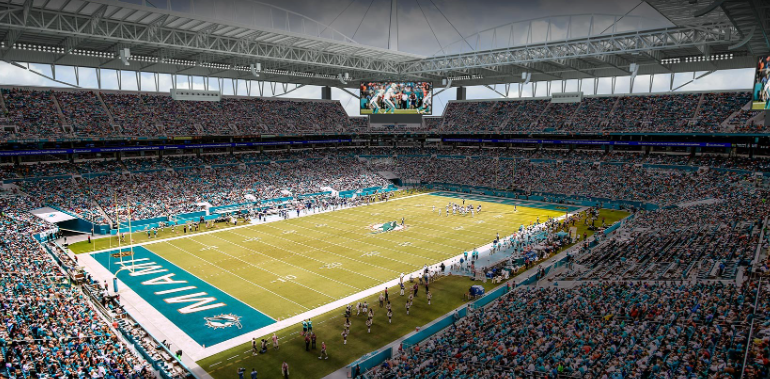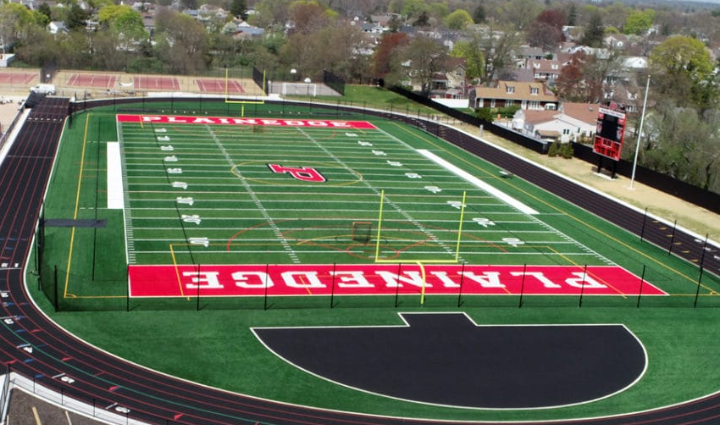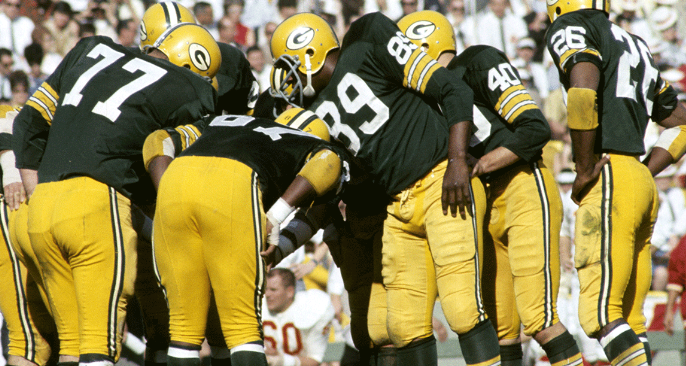In the heart of American sporting culture, where the gridiron serves as a stage for thrilling athleticism and strategic manoeuvres, lies a meticulously engineered masterpiece: the American football fields. This seemingly straightforward expanse of green holds immense significance. It was meticulously designed and constructed to accommodate the unique demands of the sport, ensuring optimal performance, safety, and longevity.

The Dimensions of an American Football Field
The American football field is a canvas of precise dimensions, measuring 53.33 yards in width and 120 yards in length. These dimensions were carefully established by the National Football League (NFL). To provide ample space for the intricate manoeuvres and explosive plays that characterize the game.
The Surface
Beneath the vibrant green turf lies a complex system of layers, each meticulously engineered to provide a stable, resilient, and safe playing surface. The base layer, typically composed of compacted gravel or crushed stone, forms the solid foundation. Atop this lies the drainage system, a network of trenches and pipes that effectively channels water away from the field, preventing waterlogging and ensuring optimal playing conditions.
The next layer, known as the subgrade, consists of a blend of soil and sand, carefully graded to ensure a uniform surface. This layer is crucial for providing the proper support for the root zone, the layer where the turfgrass grows.
Markings
Construction Techniques
The construction of an American football field is a symphony of expertise, involving a team of skilled professionals with specialized knowledge and equipment. The process begins with site preparation, where the land is cleared, graded, and levelled to create the ideal foundation for the field.
Maintenance
The meticulous design and construction of an American football field is just the beginning; maintaining its pristine condition throughout the season requires a continuous commitment to excellence. Field maintenance professionals employ a variety of techniques and equipment to ensure the field remains in top condition, including:
Mowing
Regular mowing keeps the turfgrass at the ideal height, ensuring a smooth and consistent playing surface.
Watering
Proper irrigation is crucial for maintaining the health and resilience of the turfgrass.
Fertilization
Nutrient-rich fertilizers provide the turfgrass with essential nutrients to support healthy growth.
Aerification
Aeration helps to relieve soil compaction. This allows for better air and water penetration which promotes root growth.
Topdressing
Topdressing involves applying a thin layer of sand or soil to the field.




